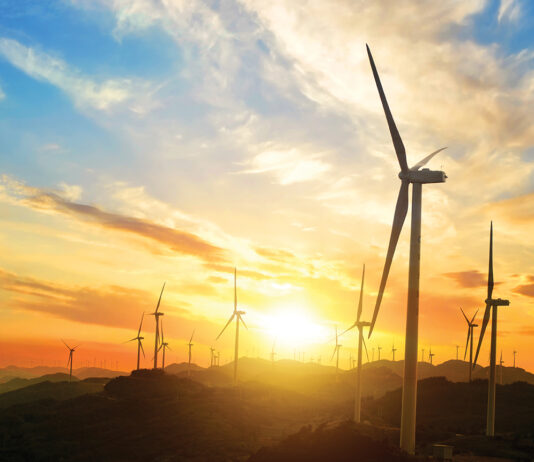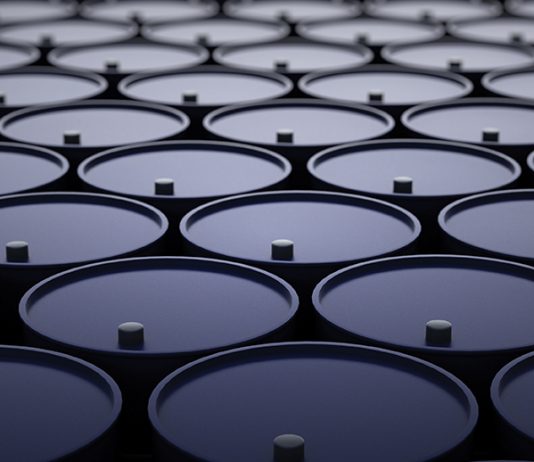
After more than a month of fighting, Russia’s invasion of Ukraine has devolved into a grinding war of attrition replete with indiscriminate attacks on Ukrainian civilians, cities and infrastructure. The U.S., Canada, Western European allies and others have responded with increasingly severe sanctions that have isolated Russia and decimated its economy. Russia’s energy sector, which is one of the top three oil producers and the second-largest gas producer in the world, has not escaped unscathed. Calls are mounting — from Elon Musk to U.S. Energy Secretary Jennifer Granholm — for U.S. producers to man the helm and increase production, but as the saying goes: “Easier said than done.”
The International Energy Agency said in its March oil market report that up to 3 MMbbl/d of Russian production could be shut in from April as sanctions bite and buyers shun exports. At the same time, hundreds of companies have announced plans to suspend their Russian operations or exit the country entirely, including major energy firms such as BP, ExxonMobil, Shell and Equinor. The U.S. has also banned Russian energy imports, while the U.K. plans to phase out imports by the end of the year and the EU is beginning to implement plans to reduce its own reliance on Russian oil and gas.
Oil prices responded accordingly as the global supply-demand balance has tightened, with WTI and Brent reaching intraday highs of $129.44/bbl and $139.60/bbl on March 8, respectively. The same day, the WTI front-month contract settled at $123.70, the benchmark’s highest settlement since August 2008. Prices have since fallen but as of March 28, WTI was still trading above $100, a level that was last seen in 2014. Volatility in oil markets is also at historic highs, with open interest volumes for WTI reaching multi-year lows in March.

The U.S. announced on March 31 that it would release up to 180 MMbbl from the Strategic Petroleum Reserve over a period of six months beginning in May. IEA member countries later agreed to release a total of 60 MMbbl from their own strategic reserves. The SPR release is the largest ever for the U.S. and will help put downward pressure on oil and gasoline prices. While this temporary measure will not in itself solve structural supply shortfalls, it appears to be timed to bridge the gap until U.S. production growth ramps up.
In its latest PetroLogic report, Enverus Intelligence Research (EIR), a part of Enverus, said that if its full sanctions scenario for Russian liquids is realized Brent could average $160 this year, implying a likely WTI average in the $150s. For comparison, the highest WTI settlement ever was $145.29 on July 3, 2008. EIR is currently projecting global demand growth of 1.5 MMbbl/d this year, already half of earlier forecasts. A $160 Brent scenario could reduce global demand by 3 MMbbl/d and lead to flat YOY demand growth compared to 2021.
On the supply side, European imports of Russia’s Urals benchmark fell by about 1.5 MMbbl/d in March, and progress on negotiations with Iran on returning to the 2015 nuclear deal is unclear. OPEC+ has also stuck to its plan to ease production cuts by a nominal 400 Mbbl/d per month, and the group has struggled recently to raise production to meet the higher quotas. The U.S. oil and gas sector can step in to fill the void Russia left in global energy markets—at least partially — but doing so will require navigating numerous risks both old and new.
Since 2019, U.S. operators have largely shifted from a growth-focused strategy to one of capital discipline and return on investment. In a March 17 research report, EIR said public shale producers went from reinvesting nearly 100% of operating cash flow in 2019 to 45% in 2021. That ratio is expected to fall even further this year at current strip prices. The significant free cash flow generated by this shift in strategy has been used to strengthen balance sheets, pay dividends and buy back shares.
Shifting back to a higher growth model will likely be a tough decision for operators, particularly those with less high-quality inventory who could run the risk of producing more costly barrels for a market that no longer needs them if the winds suddenly change. A finalized deal with Iran; sanction waivers for Venezuelan oil; Saudi Arabia and the UAE — who hold most of OPEC’s spare capacity — changing their tune; or even a sudden end to the war that leaves Russia with an opening to come in from the cold could all significantly alter the global supply-demand balance.
Still, EIR estimates that U.S. oil production could increase by 1 MMbbl/d exit to exit in both 2022 and 2023 with only modest drilling increases. In the high case, exit-to-exit growth could reach 1.6-1.7 MMbbl/d in both years if investors greenlight growth, bottlenecks are addressed and government incentives protect against long-term downside. This upside case would also bring a higher cost structure and commitment to longer-term service contracts for operators.
Among public operators, there are several Permian-focused producers who hold large inventories of high-quality drilling locations and can add significant CAPEX without accelerating any degradation in well performance, EIR said. Others hold more mid-tier inventory with $40-60 WTI breakevens that will transition from low to high value if oil prices above $75 WTI are sustained. However, because of the normal spud-to-sales cycle, any material changes today in operator plans will begin adding production in Q4 at the earliest and more likely not until 2023.
In the 1 MMbbl/d growth scenario, EIR forecasts that the majority of growth will come from Delaware, Midland and Eagle Ford basins. Further upside could come from less-economic plays such as the SCOOP/STACK and non-Eagle Ford Western Gulf by bringing forward long-dated inventory life. The active rig count would need to increase by roughly 20% from current levels by mid-2023, bringing it in line with levels last seen in the latter half of 2019.
While drillers have plenty of spare rig capacity to meet this need, many of these rigs are cold-stacked and will likely require multi-year contracts to bring back. Fracture capacity would also need to increase by 20% this year and 15% in 2023, which would require bringing all cold-stacked equipment back online plus adding another 20%-30% to the fleet’s capacity.
Besides convincing investors who are finally seeing returns, operators will have to contend with higher costs to increase production. During Q4 earnings calls, operators forecast 5-20% increases in per-foot drilling and completion costs, with smaller operators skewing towards the higher end. Incremental growth from low-graded acreage will likely entail further cost increases.
Operators will need to make additional 10- to 15-year volume commitments, EIR said, to develop the needed gas gathering, processing and transmission capacity required to accommodate additional oil production growth. This will be particularly important in the Permian, where existing infrastructure is already heavily utilized, or companies will run the risk of increased flaring at a time when ESG metrics have become increasingly important to investors.
Oilfield services companies are grappling with an acute labor shortage and attracting qualified personnel will likely come at a significantly higher cost. In the latest Enverus day rate survey, nearly a third of survey participants expressed uncertainty about future work volumes because of ongoing challenges in finding rig personnel. About 80% of respondents reported continued increases in daily operating costs, which they are attempting to offset by increasing their list of vendors and suppliers and by charging higher day rates.
Prices for oil country tubular goods and downhole consumables, which typically lag iron ore and steel, are also projected to increase in cost. Russia and Ukraine produced 10-20% of OTCG goods imported into the U.S. last year, and prices for iron and steel have risen more than 10% since the invasion began. Fracture sand is also in short supply, with many mines shuttering following the 2018 overbuild and 2020 drilling collapse, EIR said, and the remaining mines are running near capacity.
The 2024-2025 WTI strip will be an important consideration for operators’ 2022-2023 capital commitments even if wells earn attractive returns by the end of 2023. EIR expects that operators will need to see 2024-2025 prices over $80/bbl, compared to current strip prices of $70-$75, to justify long-term GP&T and OFS commitments in acreage with half-cycle breakevens ranging $50-$60. Growth in these areas would be necessary to meet EIR’s upside case of 1.6-1.7 MMbbl/d of production growth.
Gas-weighted operators will face similar headwinds. During the Q4 earnings cycle, the gas group guided toward an average 17% increase in capital spending and production growth of 4% this year, EIR said in its March near-term gas market outlook. However, EIR projects Henry Hub prices will continue ranging $4.50-$6.00/MMBtu through next winter because of low inventory levels, limited elasticity in power generation and strong demand for U.S. LNG exports.
As part of the EU’s plans to reduce dependence on Russian energy, it is aiming to reduce demand for gas imports from the country by two-thirds this year. The U.S. has promised to supply an additional 15 Bcm (530 Bcf) of LNG to Western Europe in 2022. However, existing LNG plants in the U.S. are already operating near capacity, so the gas would have to come from exports that would have gone elsewhere and would still account for only about 10% of what Russia supplied to Europe last year.
Russia’s invasion of Ukraine and the subsequent isolation of one of the world’s largest producers and exporters of oil and gas may accelerate a fundamental reshuffling of global energy markets, particularly for a European continent that was already pivoting towards low-carbon energy. U.S. producers have the capacity to navigate these troubled waters and find safe harbor on the other side. However, as they have learned since the early days of the pandemic, danger lurks just below the surface.
About the author: Matthew Keillor has worked at Enverus since 2019. As part of the publications team, he covers U.S. oil and gas commodity markets; upstream and M&A activity outside of the U.S.; and renewable energy news globally.
















